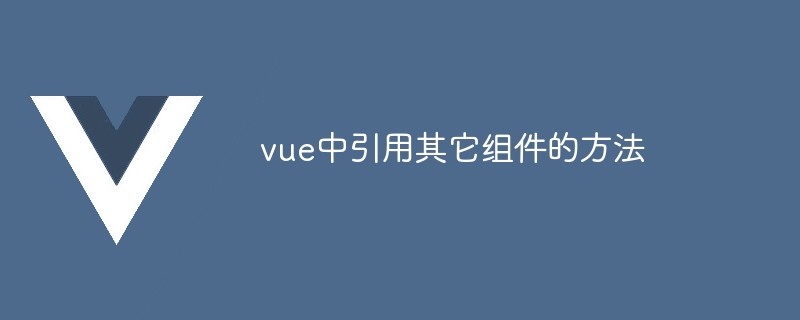在 vue 中,引用其他组件的方法包括:使用 标签、插槽、scoped 插槽、事件和 refs。

Vue 中引用其他组件的方法
在 Vue 中,引用其他组件有多种方法,具体取决于组件的声明方式和使用场景。
1. 使用
这是引用组件的最直接方法,允许在父组件中直接使用子组件。语法如下:
<code class="html"><component :is="componentName"></component>其中,componentName 是子组件的名称或组件对象。
2. 使用插槽
插槽可以将子组件内容插入到父组件布局中的特定位置。在父组件中使用插槽语法:
<code class="html"><my-component><p>这是插槽内容</p>
</my-component>在子组件中使用 slot 指令指定插槽内容的位置:
<code class="html"><template><div>
<slot></slot>
</div>
</template>3. 使用 scoped 插槽
scoped 插槽允许在父组件中创建子组件的局部作用域。在父组件中使用 scoped 插槽语法:
<code class="html"><my-component><template prop><p>{{ prop }}</p>
</template></my-component>在子组件中使用 scoped 指令将插槽转换为 scoped 插槽:
<code class="html"><template scoped><div>
<slot></slot>
</div>
</template>4. 使用事件
事件可以用于在组件之间进行通信。在子组件中使用 $emit 方法触发事件:
<code class="javascript">this.$emit('my-event', data);在父组件中使用 v-on 指令和事件名称侦听事件:
<code class="html"><my-component></my-component>5. 使用 refs
refs 可以用于获取组件实例。在子组件中使用 ref 属性指定一个引用:
<code class="html"><template ref="myRef">
...
</template>在父组件中使用 $refs 属性获取组件实例:
<code class="javascript">console.log(this.$refs.myRef);


